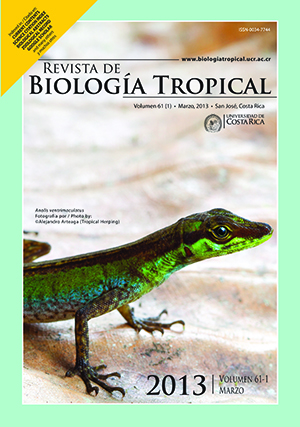Abstract
The use of alizarin red S (ARS) marked tilapias could provide valuable fisheries management information to evaluate fish stocking events and may facilitate aquaculture management practices. As a new technique in fishes, the aim of this study was to compare and evaluate the chemical marks produced in tilapia juveniles by ARS through two treatments: 1) 12 hours of immersion and 2) immersion after osmotic induction. This was analyzed at three concentrations: 50, 75 and 100mg/l, and in three structures: otoliths, fish scales and caudal fin rays of Oreochromis niloticus juveniles. After three culture months 80% of specimens were analyzed and significant differences (p<0.05) in mark intensity were detected between treatments for otoliths and fin rays, but not for fish scales. Significant differences between concentrations were found for the 12h immersion treatment, while no significant differences were detected with osmotic induction. Our results showed that marks appeared at all concentrations, and none of the concentrations produced weak marks. Osmotic induction had a greater mortality than the 12h immersion procedure. After eight culture months the rest of the specimens were analyzed and the mark permanence was observed in all cases. According to the present results we recommend the marking process of 12h immersion treatment at 100mg/L concentration.






